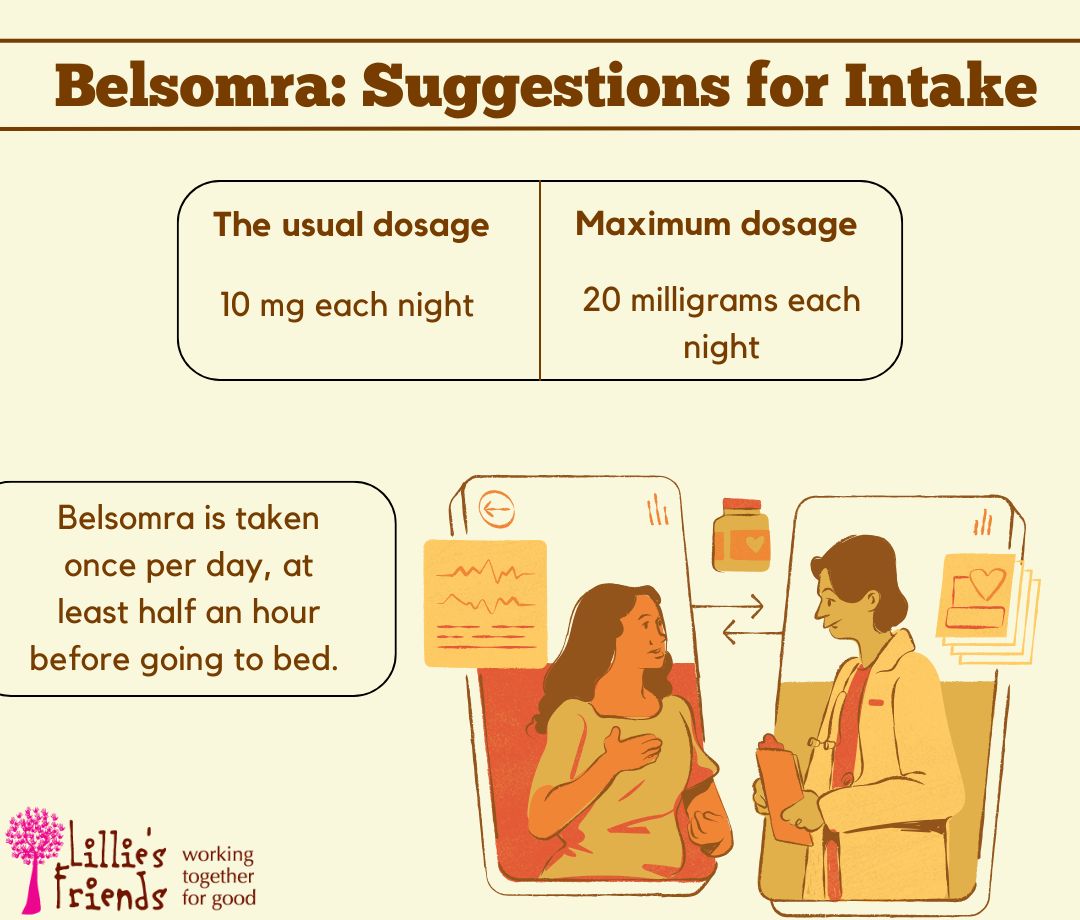Medical Disclaimer
The medicines listed on this website are only there to give you knowledge. Just because they are on the list doesn’t mean that anyone will be given them; in the end, treatment decisions are up to the healthcare workers. The medicines on this list are not all of them. Doctors may recommend other drugs, even ones that don’t contain stimulants, depending on the patient’s specific health needs and circumstances.
The most recent data indicates that up to 30% of individuals worldwide have chronic insomnia. The disease may, fortunately, be treated. Given the patient’s symptoms and unique requirements, a physician may suggest a mix of medications and cognitive-behavioral therapy (CBT) or only one of those approaches.
Among the several sleeping medications that are authorized for the treatment of insomnia is Belsomra. Let’s go over the drug’s mechanism of action, dose recommendations, adverse effects, and other essential information in this post.
What is Belsomra?
Adults are advised to use Belsomra, a prescription medication for insomnia that has FDA approval↗. People who struggle to fall asleep and stay asleep during the night are prescribed it.
Due to its potential for abuse and addiction, Belsomra is classified as a restricted drug (Schedule IV↗). It includes suvorexant, also known as Belsomra in generic form, and belongs to the family of dual orexin receptor antagonists (DORAs).
How Belsomra works
The brain chemical that keeps the brain awake and aware is called orexin, and Belsomra inhibits its action. The brain does not get a signal to wake up when the chemical’s activities are stopped, which aids in falling asleep↗.
Suvorexant has a 12-hour half-life and starts working with the first dosage. Patients 65 years of age and older, those with other medical problems, and those on other medications may have a longer half-life. Before the medicine is removed from the body, it stays there for two to three days.
Dosage of Belsomra (Suvorexant)
Belsomra comes in four different strengths as oral tablets: 5 mg, 10 mg, 15 mg, and 20 mg. To determine the patient’s ideal dose, the doctor first prescribes a modest amount that is progressively raised. The highest daily dosage is 20 mg, but the usual daily amount is 10 mg. It also depends on the patient’s age, other health issues, the severity of their sleep disturbance, and how well they respond to therapy.
Belsomra is taken once a day, at least half an hour before going to bed. Belsomra is a sleep aid that should only be taken by those who are able to sleep for at least six hours and who always heed their doctor’s advice.

Adverse Reactions
The adverse effects of Belsomra medicine might range from minor to severe. In the event that mild adverse effects go away in a few days, medical intervention might not be necessary. It is uncommon to suffer serious adverse effects with these sleeping tablets, but when they do occur, immediate medical assistance is necessary.| Minimal Adverse Reactions | Extreme Adverse Reactions |
|
|
Warnings and Contraindications
Some people may not be a good fit for Belsomra sleep aid. It is important for patients to provide their drug history, allergies, and current medications. By sharing these important details, the patient is guaranteed appropriate and successful therapy.
Contraindications
Belsomra for sleep disturbances should not be used by people with the following conditions to avoid negative side effects:
- narcolepsy
- significant liver dysfunction that already existed
Precautions
- Alcohol and Belsomra should not be taken together. Serious negative emotional and bodily responses may result from it.
- Belsomra impairs consciousness and focus. A person taking medicine shouldn’t operate machinery or drive a car.
- Belsomra shouldn’t be taken with drugs that make you sleepy.
- Belsomra should be used carefully in women who are breastfeeding or pregnant.
Symptoms of Withdrawal
To reduce withdrawal symptoms, a physician weans the patient off of the sleeping drugs gradually. When suvorexant is abruptly stopped, withdrawal symptoms might include:
- Anxiety
- Coughing
- Having diarrhea
- Lightheadedness
- Mouth dryness
- Nightmares
- Excruciating headaches
In conclusion
Belsomra is a prescription sleep aid for adults that has FDA approval. For people who have trouble falling or staying asleep, it is a successful therapy. Belsomra can have some dangerous adverse effects, though, so patients should take medication as prescribed and call a doctor right away if they have severe side effects or withdrawal symptoms. Without a doctor’s permission, a patient should never change their Belsomra dosage or stop taking the medication.











